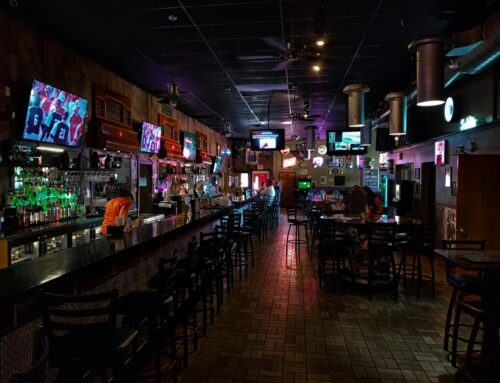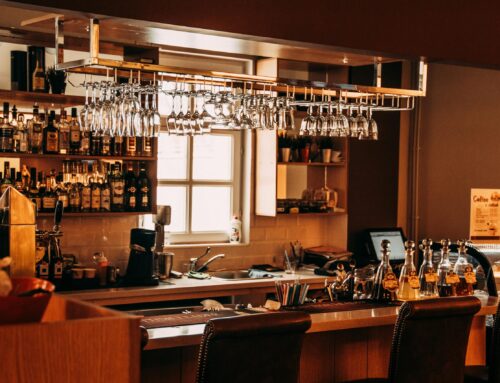When you’re running a restaurant or commercial kitchen, it can be easy to get bogged down in the details. With so many variables to consider, like food costs, labor, location, advertising, and the tedious minutiae of paperwork and permits, it may seem impossible to feel prepared for any eventuality.
Nobody starts a business expecting a fire, but it’s exactly the sort of thing that can bring even a thriving restaurant with stellar profit margins to its knees in the blink of an eye. While layout planning, sound safety practices, and keeping everything up to code will go a long way toward avoiding kitchen fires, it’s important for restaurant owners to invest in quality restaurant insurance to protect themselves from the worst.
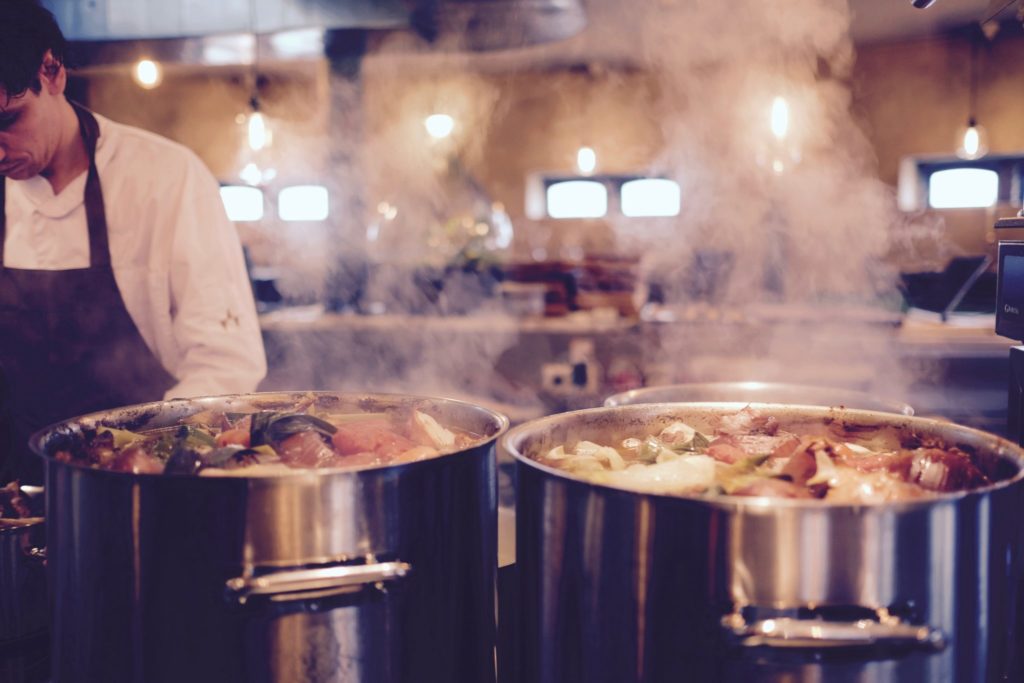
Common Causes and Prevention
Having the right insurance agency on your side can make the difference in keeping and losing your business after a fire, but the first step is prevention. It’s worth the cost to protect your investment, especially when you consider the risks.
It seems obvious, but the majority of kitchen and restaurant fires start in cooking and food preparation areas. That’s why it’s crucial to make sure that everything in the kitchen is up to code, and to go above and beyond with safety and staff education. Each individual piece of equipment in a commercial kitchen comes with a recommended maintenance schedule from the manufacturer. If the dates aren’t on the machine itself, they’ll be in the instruction manual.
Instruct back of house staff in the proper maintenance of the equipment they use, and keep on top of it with a logbook requiring employee signoff and responsibility. In addition, have your equipment professionally serviced within the recommended timeframe; not only do malfunctions threaten productivity and bottom line profit, they can be a direct cause of costly fires. Electrical malfunctions account for a significant portion of kitchen fires, and a trained service professional will be able to spot trouble areas before they create an emergency.
It’s important for restaurant kitchens to be clean for obvious reasons, but cleanliness can go a long way toward preventing damage in the event of a fire. Grease buildup on range tops, walls, and in traps provides sitting fuel for a fire that might otherwise be easily contained. When everyone’s on the same page, it’s easier for employees to work as a team and prevent fires from happening in the first place.
Invest in Fire Suppression Systems
One of the best and most effective first lines of defense against potentially devastating kitchen fires is an automatic fire-suppression system. While regular sprinkler systems are fine for offices and other places of business where the primary combustibles are wood and paper, restaurants present a different challenge. Kitchens have multiple gas lines running to the various ovens and ranges throughout the floorplan, as well as a variety of grease, oils, fats, chemical cleaners, and other flammable substances present throughout.
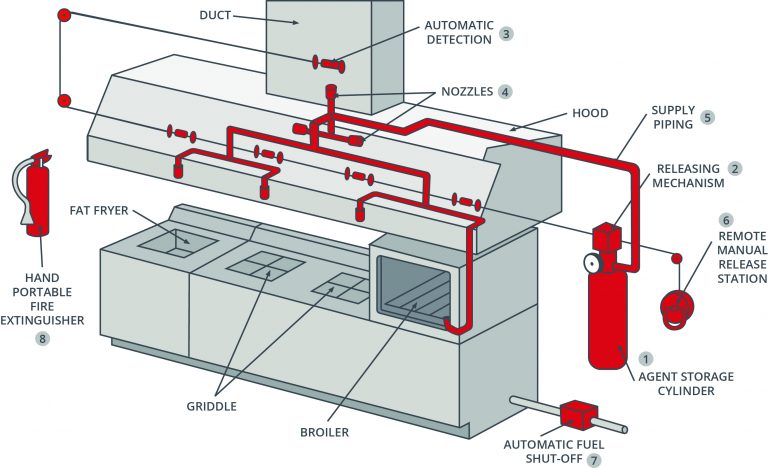
Fire suppression systems are connected to the gas and electrical systems of your building. When a fire occurs, they work quickly to cut off the supply and control the flames with chemical suppressants rather than water, which is counterproductive in fighting most kitchen and grease fires. A system such as this protects employees and the property from emergent fires since manual shutoff valves may not be immediately accessible in the event of an emergency and unrestricted gas flow to a fire is a recipe for disaster.
As with all appliances and equipment, your restaurant’s fire system should be semi-annually inspected by a professional for any weak spots or signs of malfunction. It may seem tedious, but you’ll want it to work when you need it.
Always Have a Plan
In addition to simply having fire extinguishers and suppressant systems on the premises, OSHA regulations state that restaurants must have a fire safety plan in place. A good fire safety plan should educate employees on exit routes, evacuation procedures, and the location and use of fire extinguishers throughout the building. Visual graphics of fire policies, procedures, and evacuation plans should be clearly posted in the back of house and employee areas and referred to often by management.
Employees should also be trained in storage procedures, including the placement and safe containment of the many flammable liquids, solvents, and chemicals used in the running of any restaurant. A well-run kitchen should have a consistent layout and staging process for unloading and storing deliveries of cleaners, oils, and fuel containers; even one misplaced box of combustible material can spell disaster in a kitchen fire emergency.
While all businesses are required to have a certain number and designation of fire extinguishers on hand, it’s important for restaurant owners to go above and beyond. Keep more than the required amount of Class K fire extinguishers in the kitchen; these will prove more useful in most kitchen fires than standard extinguishers, and having one within arm’s reach in a fire could save lives and prevent property damage.
What a Kitchen Fire Means for Your Business
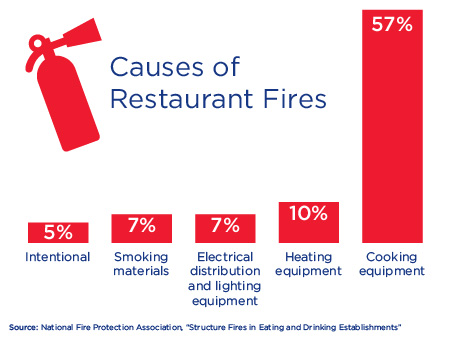 According to statistics from the National Fire Protection Association, fires caused $165,000,000 in property damage1 to restaurants annually between 2010 and 2014. That’s an average of over $22,000 dollars per incident, an amount that most individual restaurants and franchises would struggle to absorb out of pocket and stay afloat.
According to statistics from the National Fire Protection Association, fires caused $165,000,000 in property damage1 to restaurants annually between 2010 and 2014. That’s an average of over $22,000 dollars per incident, an amount that most individual restaurants and franchises would struggle to absorb out of pocket and stay afloat.
That’s just property damage; the numbers don’t account for the loss of profit due to closures or repairs, not to mention the spoilage of inventory and the interruption of supply services. Restaurants rely on momentum, networking, and word of mouth to take advantage of business swells and maximize profits whenever possible. Being out of business for even a week at the wrong time of year can completely undercut a restaurant’s progress and upset the bottom line.
All in all, even a small fire causing relatively minimal damage can be a major hiccup in your business plan without the right coverage in place.
The numbers also don’t account for the stress of rebuilding. It can be mentally and emotionally taxing to watch such a huge investment in time, energy, and finances come under threat from something like a fire. It’s well worth the price of an insurance policy to sleep easier at night knowing that, should the worst occur, you and your business will have some measure of protection and peace of mind. Restaurant insurance can help to ease the hit of a punishing kitchen fire, keep your payroll in the black, and keep your business from falling into crippling debt.; it’s a win-win-win.
How to Protect Your Business and Livelihood
A million things can go wrong in a busy kitchen, no matter how well trained the staff and how well maintained the equipment. Because of this, commercial kitchen owners and operators should be well-versed in the intricacies of any insurance policy before signing. That said, policies can be lengthy and complicated, and nobody gets into the restaurant business for the love of forms and paperwork.
The Tabak Insurance Agency is here to help. The team of professionals at Tabak specializes in restaurants, bars, and nightclubs, and it will go the extra mile to help you find the best coverage and extensions for your business’s unique needs. As your business grows, they’ll help you assess your policies to make sure that the coverage is adequate for your infrastructure and staffing needs, applying years of industry experience.
Nobody expects a fire, but that’s why they call it a disaster. Don’t let disaster derail your success; contact the Tabak Insurance Agency and speak to a representative about coverage today.
Sources
Photo Credit via a1ssi.com
Photo Credit via restaurant.org

